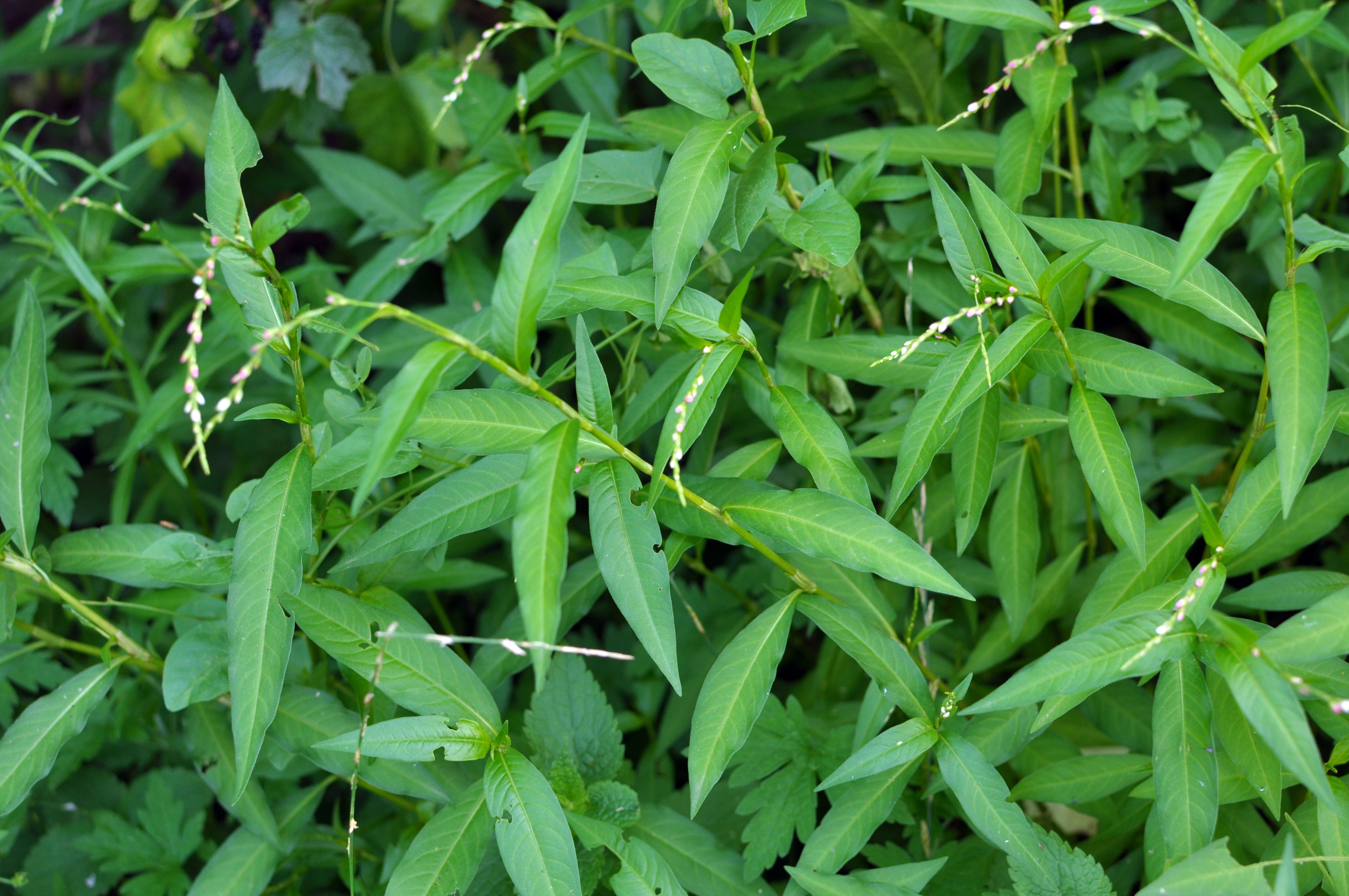Marshpepper knotweed
(Persicaria hydropiper)

Description
Persicaria hydropiper, also known as water pepper, marshpepper knotweed, or tade, is a plant of the family Polygonaceae. It is found in Australia, New Zealand, temperate Asia, Europe, and North America. The plant grows in damp places and shallow water. Cultivated varieties are eaten in East Asia for their pungent flavor. Water pepper is an annual herb with an erect stem growing to a height of 20 to 70 cm (8 to 28 in). The leaves are alternate and almost stalkless. The leaf blades are narrowly ovate and have entire margins fringed by very short hairs. They are tapering with a blunt apex. Each leaf base has stipules which are fused into a stem-enclosing sheath that is loose and fringed at the upper end. The inflorescence is a nodding spike. The perianth of each tiny flower consists of four or five segments, united near its green base and white or pink at the edges. There are six stamens, three fused carpels and three styles. The fruit is a dark brown oval, flattened nut. Water pepper has several active ingredients. Two bicyclic sesquiterpenoids are present, polygodial (tadeonal, an unsaturated dialdehyde with a drimane backbone), and warburganal, which gives it its pungent taste.The plant also contains rutin, a source of the bitter taste impression. Water pepper contains an essential oil (0.5%) which consists of monoterpenoids and sesquiterpenoids: α-pinene, β-pinene, 1,4-cineol, fenchone, α-humulene, β-caryophyllene, trans-β-bergamotene. Carboxylic acids (cinnamic, valeric and caproic acid) and their esters were present in traces. The composition depends strongly on genetic factors. Wild water pepper produces oils that cause skin irritation.
Taxonomic tree:







